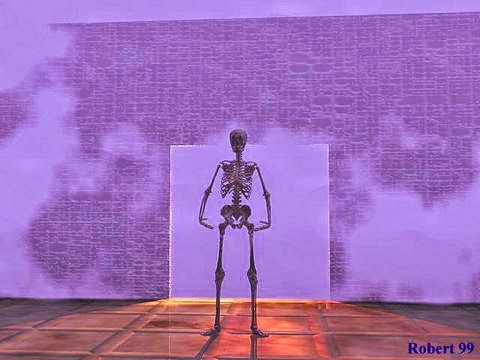Chondrosarcoma is a rare form of bone cancer. It develops from normal cartilage which goes through malignant change or can form within a pre-existing benign tumor. People who have chondrosarcoma have a single tumor growth which can vary in size and location when first discovered. It does not appear in multiple parts of the body all at once unless it has metastasized. In which case, 95% of the time it metastasizes to the lungs. It is exceedingly rare for it to spread elsewhere.
Chondrosarcoma is common to humans as well as animals. It is the second most common primary bone cancer in humans. All patients are not the same in how they are affected. Since a chondrosarcoma bone tumor can appear anywhere in the body where cartilage is found, the surgical treatment methods will not always be the same. Each case has to be considered by its own specific circumstances such as location and type.
There are different subtypes of chondrosarcoma depending on the kinds of cells identified by looking at them under a microscope. For example:
Conventional (also called Central)
Periosteal
Dedifferentiated
Clear Cell
Extraskeletal Myxoid
Juxtacortical
Mesenchymal
Synovial
Recurrence of chondrosarcoma happens in the same location as the original tumor or very close to it. Recurrence is rarely found in other parts of the body. Metastasis is not considered recurrence. Metastasis of chondrosarcoma occurs most frequently in the lungs. Very rarely does it spread to other parts of the body.
It is important to understand the difference between a benign and malignant bone tumor. Benign bone tumors are not sarcomas. A benign bone tumor is called a chondroma, osteochondroma, or enchondroma. Benign bone tumors do not spread to other tissues or organs, and are not life-threatening. They are generally removed by surgery if there are certain symptoms accompanying them. Again, these are not malignant.
Malignant primary bone tumors are so rare that they are only two/tenths of a percent of all new cancers. According to the National Cancer Institute, in 2018, an estimated 3,450 new cases of primary bone cancer will be diagnosed in the United States." Remember that means all primary cancers of the bone. Chondrosarcoma is just a small part of that count.
The most common type of bone cancer is osteosarcoma, which develops in new tissue inside young growing bones. Evidence suggests that Ewing's sarcoma, another form of bone cancer, begins in immature nerve tissue in bone marrow. Osteosarcoma and Ewing's sarcoma tend to occur more frequently in children and adolescents, while chondrosarcoma occurs more often in adults, the average age about 55 and more common in males.
Generally, Chondrosarcoma has a better outcome than Osteosarcoma. The treatment options for both these cancers are different. Treatment for chondrosarcoma is less invasive than treatment for Osteosarcoma. Treatment for chondrosarcoma commonly only involves surgical removal of the tumor and surrounding tissue. There is no chemotherapy or radiation normally used in the treatment of chondrosarcoma because cartilage is unaffected by them. Only in the more rare subtypes of chondrosarcoma are chemotherapy and radiation used.
Chemotherapy and radiation treatments are more frequently necessary in osteosarcoma. As of May 2009, chemotherapy and radiation are not effective and will not produce a cure in chondrosarcomas. If clear margins are done in the original surgery, the likelihood of recurrence or metastasis is considerably less. If the tumor is quite large or has an aggressive grade, amputation, partial amputation or limb salvage surgery may be necessary
If the Chondrosarcoma is located in the skull base, Proton Beam Radiation has been very successful in halting further growth along with necessary surgery. Regular radiation is not sufficiently strong, or as targeted to the tumor as Proton Beam radiation is. Sometimes Proton Beam is used in spinal Chondrosarcoma. Still, surgery is necessary.
Keep in mind that the percentage for full recovery in chondrosarcoma patients is much higher than in osteosarcoma. It is absolutely necessary to have frequent follow-up x-rays and scans in order to verify there are no recurrences for at least five years and sometimes eight years. Usually, this is ordered every 3 to 6 months post surgery. (This is up to the discretion of the doctor). Even if there is a recurrence caught early, there are good chances for long term survival.
Chondrosarcoma is NOT the type of bone cancer that spreads from other organs to the bone. That is called metastatic bone cancer which might be located in more than one bone. A typical example is when lung, kidney, liver, breast or other cancer spreads to the bones as part of their metastasis. Examination of the cells of metastatic bone cancer look like the original type of cancer cells, (prostate, or liver, breast etc.)
These are other types of bone cancer which are NOT bone cancers produced from other types of cancer.
Chondrosarcoma
Ewing's Sarcoma
Fibrosarcoma
Malignant Fibrous Histiocytoma
Giant Cell Tumor of Bone
Chordoma
Lymphoma
Leukemia
Multiple Myeloma
Osteosarcoma
